#Vienna's Golden Age
Text

Gustav Klimt, The Dancer, 1916-17 (unfinished), oil on canvas.
Private Collection
#1916#painting#gustav klimt#klimt#art#fine art#the dancer#dancer#art nouveau#art nouveau painting#unfinished#art nouveau painter#art nouveau in austria#Vienna Secession#art nouveau in vienna#The Vienna Secession#Vienna's Golden Age#beauty of female#Oriental wallpaper#asian look
554 notes
·
View notes
Photo
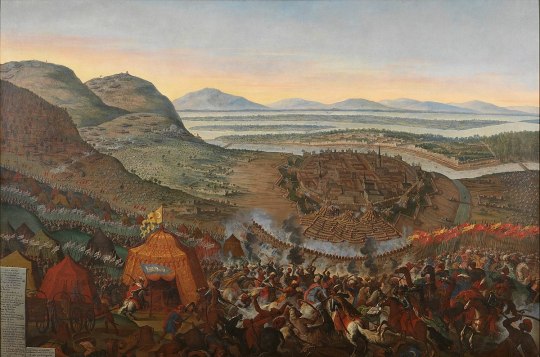
Frans Geffels - The relief of Vienna in 1683 - 1683-4
oil on canvas, height: 184 cm (72.4 in); width: 272 cm (107 in)
Vienna Museum at Karlsplatz, Austria
The Battle of Vienna took place at Kahlenberg Mountain near Vienna on 12 September 1683 after the imperial city had been besieged by the Ottoman Empire for two months. The battle was fought by the Holy Roman Empire (led by the Habsburg monarchy and the Polish–Lithuanian Commonwealth, both under the command of King John III Sobieski) against the Ottomans and their vassal and tributary states. The battle marked the first time the Commonwealth and the Holy Roman Empire had cooperated militarily against the Ottomans, and it is often seen as a turning point in history, after which "the Ottoman Turks ceased to be a menace to the Christian world". In the ensuing war that lasted until 1699, the Ottomans lost almost all of Hungary to the Holy Roman Emperor Leopold I.
The battle was won by the combined forces of the Holy Roman Empire and the Polish–Lithuanian Commonwealth, the latter represented only by the forces of the Crown of the Kingdom of Poland (the march of the Lithuanian army was delayed, and they reached Vienna after it had been relieved). The Viennese garrison was led by Feldzeugmeister of the Imperial Army (Holy Roman Empire) Ernst Rüdiger Graf von Starhemberg, an Austrian subject of Holy Roman Emperor Leopold I. The overall command was held by the senior leader, the king of Poland, John III Sobieski, who led the relief forces.
The opposing military forces were those of the Ottoman Empire and its vassal states, commanded by Grand Vizier Merzifonlu Kara Mustafa Pasha. The Ottoman army numbered approximately 90,000 to 300,000 men (according to documents on the order of battle found in Kara Mustafa's tent, initial strength at the start of the campaign was 170,000 men). They began the siege on 14 July 1683. Ottoman forces consisted, among other units, of 60 ortas of Janissaries (12,000 men paper-strength) with an observation army of some 70,000 men watching the countryside. The decisive battle took place on 12 September, after the arrival of the united relief army.
Historians maintain that the battle marked the turning point in the Ottoman–Habsburg wars, a 300-year struggle between the Holy Roman and Ottoman Empires. During the 16 years following the battle, the Austrian Habsburgs gradually recovered and dominated southern Hungary and Transylvania, which was largely cleared of Ottoman forces. The battle is noted for including the largest known cavalry charge in history.
Frans Geffels, known in Italy as Francesco Geffels (25 August 1624 – 18 February 1694) was a Flemish painter, printmaker, architect, stage designer and designer of ephemeral structures for solemn and festive occasions. After training in his native Antwerp, he was mainly active in Mantua, where he was prefetto delle fabbriche to the Duke, a role that gave him the direction of the artistic and construction activities undertaken by the Ducal court. He worked also on projects for the local aristocratic class of Mantua. In addition, he completed projects for the Liechtenstein princes and for the imperial court in Vienna.
He was both a canvas and fresco painter. He created portraits, history subjects, military scenes, architectural scenes and genre art, in particular merry companies. Geffels is mainly remembered as the designer of some of the key examples of Baroque architecture in Mantua.
21 notes
·
View notes
Photo
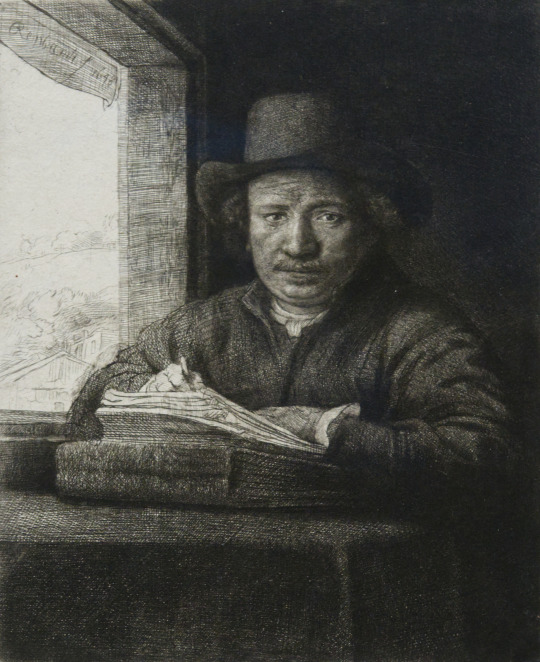
REMBRANDT HARMENSZ. VAN RIJN (1606-1669)
“Selbstbildnis beim Zeichnen an einem Fenster” (1648)
“Self-Portrait Drawing at a Window” (1648)
Radierung, Kaltnadel und Grabstichel
Etching, drypoint and burin
Sammlung / Collection ALBERTINA Wien / Vienna
Ausstellung / Exhibition
Dürer, Munch, Miró.
The Great Masters of Printmaking
ALBERTINA Wien / Vienna - 2023
#rembrandt#Selbstbildnis#self portrait#radierung#etching#Albertina Vienna#the masters of printmaking#rembrandt harmenszoon van rijn#dutch#painter#printmaker#draughtsman#dutch golden age
12 notes
·
View notes
Note
Which round chandelier in replica productions do you like better?
Vienna or West End
Vienna. Partly because it's so little photographed and so shrouded in mystery it's kind of legendary. Why was it round, why was it hardly photographed, where did it go? Why was it the only replica chandelier to be round?

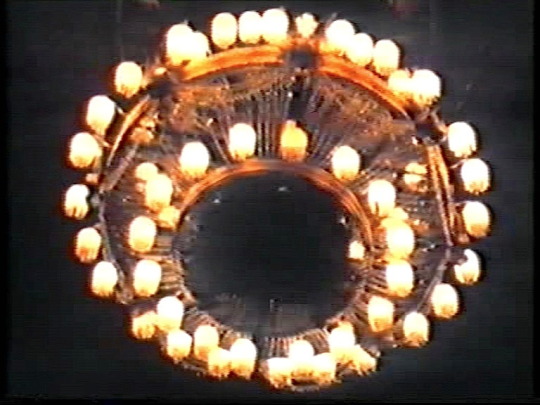
And partly because I appreciate what they went for in the West End revival, but I still think it's a too shiny Disney look. It has a very golden appearance which frankly looks a bit fake. I'm a bigger fan of brass, of a hint of shadows, a hint of age. That said, I like its bold Garnier flair and massive appearance. I just wish it wasn't as polished and golden.

Also, are we gonna talk about the West End revival chandelier AND the Restaged Tour's current Vienna chandelier both getting the same kind of lamp top as a later addition?
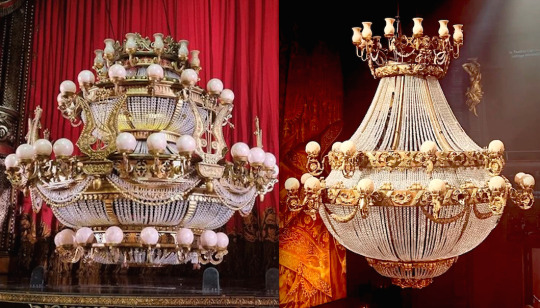
#chandelier#not another chandelier#phantom of the opera#poto vienna#poto restaged tour#poto west end revival
22 notes
·
View notes
Text
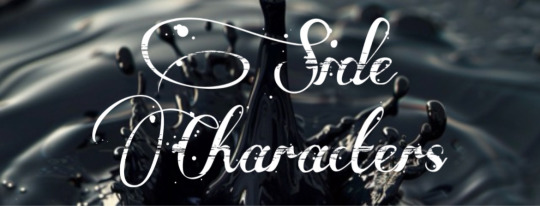
(AI Generated Images Disclaimer)
(May be updated as time goes on)
The White Rabbit
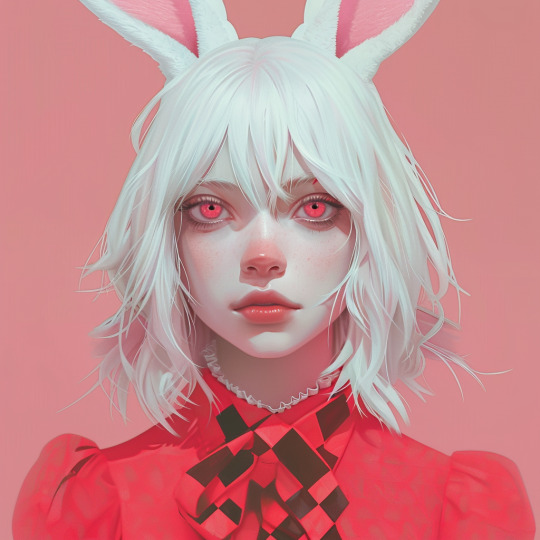
Name: Lapin
Gender: Nonbinary (they/them)
Age: Immortal, physically early twenties (20-23)
Appearance: Albino, short straight hair, white rabbit ears and tail. Lapin is 5'4 (163 cm).
The White Queen
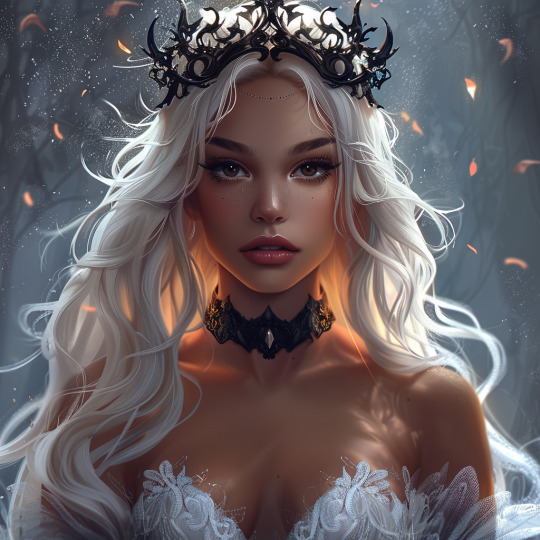
Name: Maria
Gender: Female (she/her)
Age: Immortal, physically late twenties (27-29)
Appearance: Clear light brown skin, long wavy white hair, black eyes. Maria is 5'6 (168 cm).
The Caterpillar
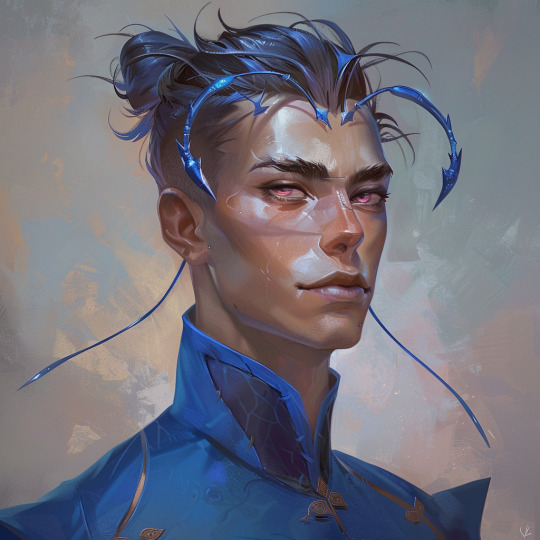
Name: Brucus
Gender: Male (he/him)
Age: Immortal, physically early 30's (30-33)
Appearance: Clear medium-olive skin, slicked back raven hair, magenta eyes, 2 long caterpillar antenna. Brucus is 6'2 (188 cm)
The March Hare

Name: Haze
Gender: Nonbinary (he/they)
Age: Immortal, physically mid-twenties (24-26)
Appearance: Clear medium-tanned skin, short straight dark brown hair, green eyes. Haze is 5'10 (178 cm).
The Dormouse

Name: Grace
Gender: Female (she/her)
Age: Immortal, physically early twenties (20-23)
Appearance: Fair skin with freckles, short wavy-curly silver-grey hair, light brown eyes, mouse ears and tail. Grace is 5'1 (155 cm).
The Red Knight

Name: Cal
Gender: Male (he/him)
Age: Immortal, physically mid-thirties (34-36)
Appearance: Clear pale skin, long wavy red hair, red eyes. Cal is 6'3 (191 cm).
The White Knight

Name: Ridir
Gender: Male (he/him)
Age: Immortal, physically early thirties (30-33)
Appearance: Clear tanned skin, long straight silver hair, light blue eyes. Ridir is 6'2 (188 cm).
The Fawn
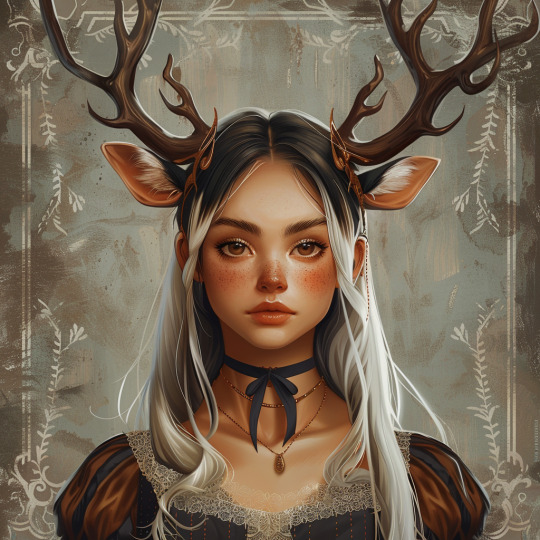
Name: Daina
Gender: Female (she/her)
Age: Immortal, physically early twenties (20-23)
Appearance: Lightly freckled tanned skin, long straight dark brown hair with white streaks, dark brown doe eyes, deer ears and antlers. Daina is 5'8 (173 cm).
The Lion
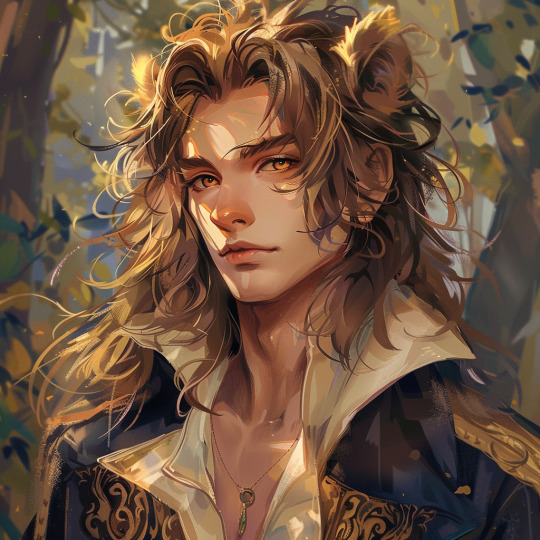
Name: Lowen
Gender: Male (he/him)
Age: Immortal, physically mid-twenties (24-26)
Appearance: Clear tanned skin, long unruly brown hair, golden eyes, lion ears and tail. Lowen is 5'8 (173 cm).
The Unicorn

Name: Vienna
Gender: Nonbinary (she/they)
Age: Immortal, physically mid-twenties (24-26)
Appearance: Smooth dark skin, long wavy white/light golden hair, light pink/purple eyes, golden horn and horse ears. Vienna is 5'10 (178 cm)
28 notes
·
View notes
Text

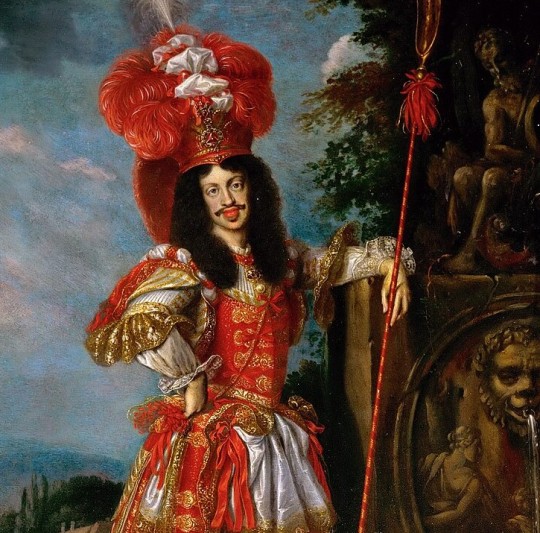
Charles V, King of Spain, Holy Roman Emperor, etc. reigned 1519-1556
His two iconic bastards are also in this bracket.
from @master-of-the-opera-house:
Universal empire babey! Sure he lucked into it, but very much successfully kept it afloat in his time on the throne, more than less anyway.
Born on toilet at a party at 3am
Mummy issues
Daddy issues
Shagged his step-grandma when he was 19. Love wins!
Look at the size of that chin! A peasant had to tell him to close his mouth bc he couldn't keep his jaws shut by default
If Leopold was the ugliest in the Austrian branch he's probably the ugliest or at least second in the Spanish branch
Approved of a cocks-out nude statue of himself walked so nsfw fanart commissions could run
The ✨ confidence ✨ he had to do that uwu
God complex
Accidentally shot a peasant dead with a crossbow once as a teen oopsie
((probably wasn't the same peasant))
Burnt out and got depressed at the end of his life the least he could win is a poll
Split the inheritance into the Spanish and Austrian branch so without him we literally wouldn't even be voting today
Leopold I, Holy Roman Emperor, reigned, 1658-1705
So many wars going on in this reign
Also from @master-of-the-opera-house (rooting for both sides I guess):
LOOK! AT! THAT! DRIP! Serving! Slaying! Who doesn't love a red lip?
Often termed the ugliest member in the Austrian branch which is saying a LOT he's a winner baby! 💅
He must've had such confidence uwu
Un-screwed his way back from a pretty rocky start from beefing with everyone ((9 years war Spanish succession etc)), to the success in the Ottoman Siege of Vienna
Wasn't originally trained to rule even! Held up well tbh
Also backpedalled from a succession crisis
His wife called him "Uncle" because she was also his niece who doesn't love when couples are close 🤪🤪
Hated Louis XIV and don't we all
Responsible for a lot of cool baroque golden age stuffandthings
Freddie Mercury moustache before Freddie Mercury made it cool
Theatre kid
MuSicAL tHeatRe kid.
#best habsburg bracket#house of habsburg#without biasing anyone to either side#they just don't make fashion like either of these portraits anymore what a pity
30 notes
·
View notes
Text
A director must be a policeman, a midwife, a psychoanalyst, a sycophant and a bastard.
Billy Wilder
Austrian-born American filmmaker, screenwriter, producer, artist and journalist Billy Wilder is regarded as one of the most brilliant and versatile filmmakers of Hollywood‘s golden age. With ‘The Apartment’, Wilder became the first person to win Academy Awards as producer, director and screenwriter for the same film.
Born Samuel Wilder in Sucha, Austria (now part of Poland) in 22 June 1906, Billy Wilder spent his early professional life as a reporter in Vienna. In 1926 he relocated to Berlin, where his reputation as a journalist grew. But by then a different dream had taken hold - the movies. Selling his first script to an extremely grateful and quite naked producer he helped hide from the jealous boyfriend of a neighboring young lady, Wilder’s career as a screenwriter began. After several successful years in the German film industry, Wilder fled to Paris a week after the Reichstag fire in 1933.
Ten months later he emigrated to America, where an initially difficult time in Hollywood gave way to employment as a screenwriter.
In 1938 Wilder was teamed with Charles Brackett. Through their scripts for such films as ‘Bluebeard’s Eight Wife’, ‘Ninotchka’, and ‘Ball of Fire’, they became the best-known and most respected writing team in Hollywood. This success enabled Wilder to fight for and win his first American directing assignment, the now-classic comedy, ‘The Major and the Minor’, and “the Billy Wilder Film” was born.
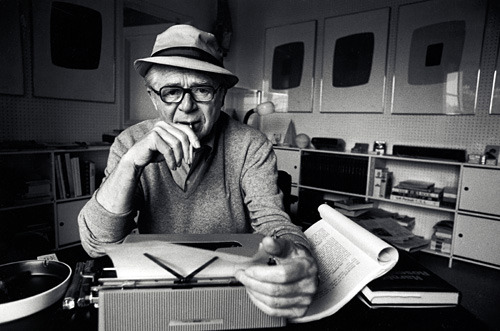
“The Billy Wilder film.” The phrase is at once as specific and difficult to casually categorise as the filmmaker himself. Billy Wilder, the master of the American comedy who wrote and directed the grand melodramas of ’Sunset Boulevard’ and ‘Double Indemnity’. The hard-hitting dramatist who created the funniest movie ever made, ’Some Like It Hot’. The “great cynic” who steeped us in the lyric romanticism of ‘Love in the Afternoon’ and ‘Avanti!’. The “classic romantic” who confronted us with the harsh realities of ‘Ace in the Hole’. Simultaneously one of the most European and American of all directors, the man refuses to stand still long enough to allow us our neat and easy definition. But, to put it in his own words, “Nobody’s perfect.”
Through his work on films as daringly varied as ‘The Lost Weekend’, ‘A Foreign Affair’, ‘The Apartment’, and ‘The Private Life of Sherlock Holmes’, this “imperfect genius” has proven himself a true master of all aspects of the language of film, as comfortable and adept t telling a story thorough his brilliant visual style as through his unparalleled dialogue. And although the characters, the locales, the tone and genres may change, one subject seems to remain constant - the bizarre and glorious state know as the human comedy. Through the drama and the farce and the romance and despair, what we’re watching up there is, as in all great art, a reflection of ourselves.

Often running into criticism for his presentation of taboo topics such as alcoholism and prostitution, the high quality of the films redeemed him in the eyes of both the public and the industry. Of the many great stars he directed, Marilyn Monroe, Marlene Dietrich, Shirley MacLaine, Jimmy Stewart and Jack Lemmon are only a few.
The late 1960s and 1970s, however, were not as kind to Wilder. His brand of cynicism, irony and satire were out of step with this generation’s view of peace, love, revolution and individual experimentation
A 7 time Oscar winner, Steven Spielberg called him "the greatest writer/director who ever lived." Here's some amazing footage from his birthday party where he was joined by a host of famous directors.
#wilder#billy wilder#quote#film director#film#film producer#oscar winner#writer#films#cinema#movies#hollywood#hollywood golden age#arts#culture#icon
53 notes
·
View notes
Text
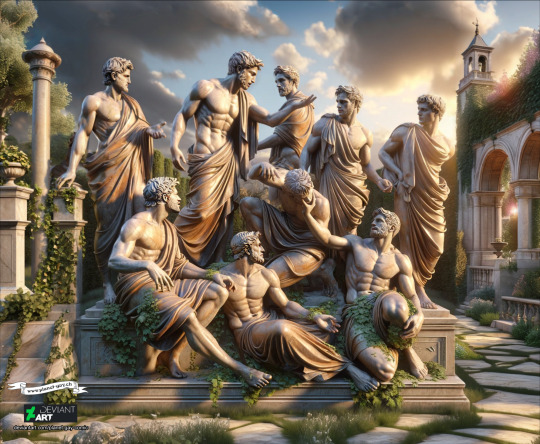
The Debate
From the Agora to the Hashtag: The Evolution of Political Debate
In the golden era of antiquity, when philosophers in flowing robes strolled through the Agora, political debates were a feast for the mind. Imagine: Sharp-witted men like Socrates, armed with nothing but stunning logic and a sharp mind, laid the cornerstones of democracy. These debates had style, substance, and not a trace of trolling.
Jump to the Middle Ages: Political debate shifted to the halls of power, where the word 'intrigue' carried more weight than a dozen heavy armors. Here, in the shadows of castle walls, the word was often a plaything in the hands of nobles, whose idea of 'freedom of expression' was limited to the king freely expressing his opinion.
The Renaissance marked a return to the roots of critical thinking. In academies and at humanistic princely courts, surrounded by artworks reflecting the legacy of antiquity, scholars and thinkers ignited new debates about politics, art, and science. These conversations were marked by a revival of humanistic ideals and contributed to the emergence of modern political philosophy. In this era of awakening, the discussions were not only a matter of the mind but also an expression of Europe's growing cultural and intellectual self-confidence.
In the 19th century, as Europe was seized by the waves of industrial and political revolutions, coffeehouses and salons experienced their golden age. In these spaces, found in cities like Vienna, Paris, and beyond, intellectuals and artists sparked lively debates on the pressing issues of the time. The debates in these coffeehouses and the discussion circles in the salons, often led by cultivated hostesses, were characterized by wit, satire, and a profound influence on Europe's cultural and political landscape. In this atmosphere of openness and exchange, many thoughts and movements that shaped the modern world emerged.
In the Age of Enlightenment, debates became somewhat more civilized, though no less heated. Parliaments and public forums became the stages where ideas clashed in gladiator-style. Here, modern ideals of freedom of speech and representation were born - and sometimes the not-so-modern ideals of political theater.
Then came the 20th century, and with it, the media. Political debates were now conducted in the living room, broadcast live and accompanied by charming moderators. Charisma began to trump content, and debate mutated into a television sport, where points for style were as important as those for substance.
Today, in the age of the internet and social media, political debates have entered a new, digital arena. Twitter/X, Facebook, Reddit – these are the modern Agoras. Here, hashtags fight instead of heroes, memes instead of manifestos. The political debate has turned into a 24/7 online battle, where everyone with a smartphone is a gladiator of rhetoric. Ironically, in a world where everyone can share their opinion, the screams seem to get louder, while listening takes a back seat.
In a bizarre twist of fate, we have gone from the Agora to the avatar, from Platonic dialectic to digital dispute. Have we lost the art of civilized conversation? Perhaps. But one thing is certain: Never has the political conversation been more alive, louder, and, well, hair-raising.
Text supported by Chat GPT-4
Images generated with Dall-E, overworked with SD-1.5 and ClipArtStudio
#DebateEvolution#marblestatue#gayart#statue#toga#greek#debate#ancient#history#men#discussion#roman#democracy#freespeech
16 notes
·
View notes
Text
Vienna Blood decided they were going to direct some of the most beautiful tv currently onscreen, clearly inspired by classic golden age films, with gorgeous sets and costumes and camera quality. They also decided absolutely none of the budget was going into improving the writing
#it’s stunning it’s beautiful it’s like if Sherlock knew how to use its budget with set and costuming and directing and editing#however I HATE the romance subplots right now and the 2nd episode ended on a whimper#lame. so much stuff makes no sense and is up in the air. at least the sets and clothing and direction is beautiful though#vienna blood
56 notes
·
View notes
Text


⸺ prelude

ʀ. Aemond Targaryen x Vienna Targaryen (OC) Later on
ᴡᴄ. 2.1k
ᴅɪsᴄʟᴀɪᴍᴇʀ. Mention of Character Death. Angst. Hurt/Comfort. Dragons. Idiots falling in love again.
I do not consent to having my work reposted, translated or copied in any way, shape or form.
⸺ ᴘʟᴀʏʟɪsᴛ | ᴀᴏ𝟹 | ᴍᴀsᴛᴇʀʟɪsᴛ
follow @acontrariumlibri and turn notifs on to get notified about updates.
ɴᴇxᴛ ᴄʜᴀᴘᴛᴇʀ

History remembers names.
Rather, whoever’s writing it does. Little does anyone say about the ones that got lost in time. Patches of ink on crumpled paper that have been turned to ashes. Pieces of a forgotten past. Buried under the retellings of a deceitful memory. Not just anyone’s memories. Only those who live get to tell the stories. Teach the lessons. Erase the failures.
This is what this story is, a recollection of failures. The black sheeps of the family. The little branch that got cut from the tree. The letters that were burnt. The passages only some knew and even fewer remember. This is a journey through the cracks, the secret tunnels that threatened the perfect foundation we now stand on. The remnants of a life that grows in the fissures. For all it takes is a single ray of sun to bring us back to life.
⸺
Our story begins a few years in the near past.
History books tell us that Viserys I Targaryen’s reign was decided at the Great Council of 101 A.C. Having yet to produce a male heir, Daemon Targaryen was the closest heir the King had. A young, wild and hot-headed man, unsuited for the throne. The two brothers served as two sides of a coin, night and day, the heirs of the Targaryen Household.
However, what most ignore is the thin line of blood wiped from the records, a reckless child, the third brother, Daeron Targaryen. It is said that with his birth, he took what little life was left of Princess Alyssa. Hated by his father and resented by his brothers, the child grew prone to aversion and hostility. Those who knew him would whisper of the Prince’s indiscretions. A privileged child, who had everything but his family’s love.
From a young age, the little Prince showed excellence in all areas. A lover of arts and a skilled swordsman. Perhaps the previous statement should be corrected, he was excellent in all areas that could be taught. A quick learner that despite his talents, was not blessed with the natural gifts a Targaryen should possess. Perhaps the only true gift his blood had given him, along with the white hair and amethyst eyes, was madness, and as he stared at the egg that never hatched, this one only worsened.
As he grew, the main pleasures of his life came from sex and death. He controlled the powerless in a way he wished to control his family. Once he was old enough, he made it his goal to know the Seven Kingdoms. Never staying in one place for a long time, his days passed in a constant turmoil. One maid once heard him say if he stayed still for too long, the voices would surely eat him inside. So he kept moving, an enemy to silence and a lover of chaos. It is said he rivaled his brother Aemond in mischief.
Little to no attention was paid to his antics, having grown well accustomed to, what they called, the Prince’s attention seeking behavior. No one truly knew where the funds for his endeavors came from. It was well known the crown had as little ties to him as they could, giving the minimum a Prince could have. However, some said Daeron was the owner of several establishments; using multiple aliases, making sure no ties to his real name were left, his golden hands crafted his own network of trade.
Daeron’s life was a constant loop. Arrive at a new town, party, invest, have fun, leave. And on and on he went. A whirlwind of emotions in the body of a young man. Until one day in a peculiar little town, so small it didn’t show in the maps, full of magic and life. This was his second time coming to this place. The first one, many moons ago, he had stumbled in the area by accident, after getting in a heated argument a few towns over and leaving in the cover of the night. His savior that night, his accomplice and later on business partner, took him in that night and taught him how to be a proper man. Something he had forgotten along the way in his self pity journey.
Maera, a beautiful woman, wicked smart with a compassionate heart. She could read into your soul and decide what kind of person you were in minutes. That cold night she took a peculiar interest in him, without giving him any reason why. Still a young impressionable boy, he learned everything he could from her. For the first time since embarking on his trip, he decided to stay in one place, with the closest thing to a family he ever knew. She never told him her age, but he knew she was older, not by looks but by her actions. He felt like a child next to her, and not only because that’s how she treated him sometimes.
Soon, the raging storm that haunted his dreams quieted.
In this little town, Maera was considered of great importance, well respected and loved. Everyone came to her seeking advice and help. A knower of deeper arts, that came from a far away land long ago. It is said her knowledge surpassed by far that of the Maesters at the palace, and her beauty was the fruit of the most exquisite poetry. She became the first motherly figure the boy had ever had. It was known that even after years of leaving the land, thousands of crows flew from and back to deliver the correspondence of the pair. She would also be the one to join our two lovers, even if unintentionally, she would be one of the dominoes leading to the origins of this story.
The Harvest Festival. A long celebration of life and all the pleasures that came with it, especially those of the flesh. As was usual, the Prince was engrossed in the different interactions, sitting in his makeshift throne, the center of attraction. It’s funny, in retrospect, how a single glance could change the course of history as we know it. Her hair shone under the pale moonlight like an illusion, a golden mask covering half of her face, the darkness of her eyes drowning him. A wicked smile could be seen, her white teeth shining pearls as she bowed before him, the spinner trapping its prey.
Thick ebony hair, eyes so black they could swallow you whole and a smile that drew you in, as a siren song to her spider web. Elaena. Her name came like a prayer, a sip of water to a dying man. All everyone knew about her was that she had crossed the narrow sea with a group of misfits, entertainers of the lowest pleasures. Her mystery only added to her charm and made her that more desirable to everyone who laid their eyes on her. However, on a clear night, the full moon lighting their path, their eyes met under the masks and disguises and never looked back.
⸺
For five springs their love bloomed.
Devoted and faithful, their eyes only saw each other and knew no one better than the other. Despite the initial disapproval of the family, the lovers married soon after that first night. The Prince was said to happily adjust to married life. Leaving his wandering days in the past, he committed himself to the newfound happiness he had so desperately craved. The constant trips were reduced, the burden lessened. Their days were filled with a peace that came from building their life together. A long forgotten castle, neighbors to House Arryn on the eastern lands, was their home.
It was said the Lady of the Arryn had an interest in the charming Prince. Favoring his wicked humor and his scheming mind, many believed the reason she so eagerly welcomed the couple in her lands was for a chance to see the white-haired man up close. It was no secret that the newly crowned Queen had less than a kind thought for the recently named Princess, as did the rest of the royal family. An unknown woman from some far away land, next to an unstable man who, they deemed, had brought nothing but misfortunes to their lifeline were to be kept away, or so they thought.
As their household bloomed with love, it was not to say it didn’t suffer its own hardships. Many losses were suffered through the years, the Princess agonizing cries ringing through the castle walls as yet another life was lost. Some thought it was a curse, “Perhaps the Princess is not meant to bear children”, the Maesters would say. Still, despite the Prince's protests and fears, the Princess’ attempts didn’t waver. She wanted to give him a family, she would say. He deserved that.
On their last attempt Maera was called, once again. Seeing the fragile state of the Princess, her first thought was to terminate the pregnancy as soon as possible. The only thing that refrained her from expressing it was the tired look on Elaena’s face. Her eyes revealed the pain she was desperately trying to hide inside. Her swollen belly was too big for her worn out body and yet she caressed it with such devotion, one may think her a saint.
It is said the Prince became a shell of what he once was, consumed with worry and fear for his wife, he would not leave her side if he could help it. It took a nudge and a sleeping remedy for the women to have some privacy.
There are some things, in a marriage, one must keep from the other. Whether that is to protect them or to protect themselves, that is of little importance when dealing with the consequences, which is why the Priestess didn’t flinch when hearing the Princess’s confession.
“I did something bad and I believe I may have cursed our child.”
A blood curse is not easily, if ever, truly broken, for there’s no curse more twisted than love.
On the third night of a cold winter night, a black haired babe was born with wine colored eyes, shining full of life as her cries echoed through the castle. And as her father had done before, her birth sealed their parents fate, for the hex was impossible to crack.
“You know, I never wanted children,” Maera said, as a secret shared between confessions “troublesome little creatures, they are. I do a fine enough job finding trouble by myself, you know?”
The comment was met with a breathless laugh, the pale complexion covered in sweat showing something close to a smile.
“But there was something about that boy that night. His expression screamed all levels of problems, I knew the first time I saw him he would be a pain. And yet, I couldn’t bring myself to leave him alone… and now I’m glad I didn’t.”
Maera held Elaena’s hand in hers, as the latter silently cried, her strength long gone.
“I will take care of your child. Whatever the course, I swear to look after her.”
A promise. A vow. A sentence.
The Princess’ cries, begging for forgiveness and regretting making their daughter an orphan, were heard through the castle as the couple held each other one last time, their final goodbye lost in the memories of the newborn child.
⸺
Some say the Prince went mad with greed. Tired of his brothers’ mistreatments, he took out the rage on those weaker than him. His wife, an unfortunate victim. Stories tell they killed each other in a fit of rage, the witch, tired and resentful, made sure that was the last bruise he put on her face. With a dagger in hand, the desperate wife launched her attack, the precise aim of a killer striking the vital points of her lover. It is said the wench, covered in the warm blood of her husband, took the knife to her neck, bidding one last farewell to the crying infant in the crib by the bed.
However, other voices, the witnesses in the dark, the following eyes of this fiery dance, assured the prince went mad, without a doubt. But it was the poor condition his wife had been in what drove him to insanity. You see, the princess never recovered from the blood loss that childbirth presented. Two nights she bled, the pain driving her to delusions. The prince held her through it all, and by the time her last breath was exhaled, with it went his. For their lives have been joined as one, as only true lovers could be.
⸺
Rumors said an egg was stolen from a baby's crib. Blacker than the night sky, covered in amethyst jewels, the unclaimed dragon from the hatched egg was a vision in itself. Many tried to tame it, their flesh served as fuel for the creature to grow, forever without a rider.

→ you're responsible for your own media consumption. be aware of the warnings
comments + reblogs are very much appreciated and encouraged ♡.

#prince aemond#prince aemond targaryen#aemond targaryen#aemond x oc#aemond one eye#aemond smut#aemond targaryen angst#aemond targaryen one shot#aemond targaryen smut#aemond targaryen x original character#hotd fanfic#aemond fanfiction#aemond fic#aemond x reader#aemond hotd#©acontrariis
67 notes
·
View notes
Photo
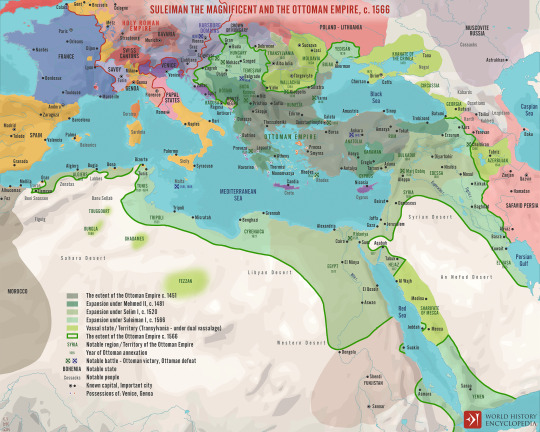
Suleiman the Magnificent and the Ottoman Empire, c. 1566
Suleiman the Magnificent (also given as Süleyman, Suleyman I, or Suleiman the Lawgiver) was the Ottoman Empire's tenth sultan and the longest-reigning one (he was on the throne for 45 years - from 1520 until his death in 1566), overseeing a realm of more than 25 million people. A most formidable leader (even when compared to his notable royal contemporaries, Francis I of France, Henry VIII of England, and Charles V, Holy Roman Emperor), Suleiman conquered Hungary (the Ottomans kept control for more than 150 years) and advanced to the heart of the Habsburgs domains besieging Vienna, wrested control of Iraq from the Safavid Persia, captured all principal ports in North Africa and for quite a while turned the Mediterranean into an Ottoman sea. Moreover, economic growth, trade, and support for cultural and artistic advances often describe this period of Ottoman history as a golden age.
Image by Simeon Netchev
41 notes
·
View notes
Photo

REMBRANDT HARMENSZ. VAN RIJN (1606-1669)
“Selbstbildnis” - “Self-Portrait” (1639)
Radierung / Etching
Sammlung / Collection ALBERTINA Wien / Vienna
Ausstellung / Exhibition
Dürer, Munch, Miró.
The Great Masters of Printmaking
ALBERTINA Wien / Vienna - 2023
#rembrandt#Selbstbildnis#Selbstporträt#self-portrait#Albertina Vienna#the masters of printmaking#rembrandt harmenszoon van rijn#dutch#golden age#painter#printmaker#draughtsman
12 notes
·
View notes
Text
game time!!
10 songs i've listened to lately
tagged by: @goldsainz and @poetsblvd thank you for tagging me!!
rules: list 10 songs that you've been listening to lately.
tagging: @softtdaisy , @f1version , @thatsdemko , @vetteltea , @sainzcaleruega , @silverstonesainz , @formulaforza , @percervall , @curiousthyme , @scuderiasundays , @sebscore , @sufferingnow , @b0r3dtod3ath , @vinvantae , @strawberrysainz , @lorarri , @goldenalbon , @monzamash

— real love baby by father john misty
— golden age by chris staples
— back on 74 by jungle
— oysters in my pocket by royel otis
— vienna by billy joel
— home by edward sharpe & the magnetic zeros
— silver springs by fleetwood mac
— asc. scorpio by oracle sisters
— tieduprightnow by parcels
— confidence by ocean alley

#xoxobee#beeplays#i'm not gonna lie to you all#this is my study playlist#kinda makes me dance sometimes though
5 notes
·
View notes
Text

C.A. Jensen (June 26, 1792 - 1870) was a Danish painter of the Golden Age.
Jensen was a pioneer of the small scale ‘intimate’ portrait painting that became fashionable in the 1830s. He had studied at the Danish Royal Academy, but skipped off to Dresden after winning the Silver Medal. From there it was on to Vienna, Northern Italy, and finally Rome where he joined the Thorvaldsen circle of Danish ex-pat artists.
Above: Drengeportræt. En af kunstnerens sønner, 1836 - oil on canvas (SMK)
#art#danish painter#c.a. jensen#oil on canvas#danish royal academy of fine arts#smk#smkmuseum#statens museum for kunst#portrait painting#genre painting#1830s
15 notes
·
View notes
Text
PAINTING ELECTIVE
Brief One- "Portrait"
Anselm Kiefer Powerpoint
Due to some technical difficulties I unfortunatley was not able to present my powerpoint on my selected date. Thankfully Eoin was very understanding and instructed me to simply post my powerpoint onto tumblr.
I chose my artist somewhat randomly, so I was surprised at how much I related to his artistic process, particularily how he is inspired by poetry and incorporates it heavily into his work. I enjoyed researching this artist from various websites and from the books I took out of the library, and this has definitely made me take an interest in this artist outside of this project.
With that, here is my powerpoint. Trigger warning for themes of war and the Holocaust.
I wrote a script to read while I presented each slide, so each page will be written under its assigned slide.
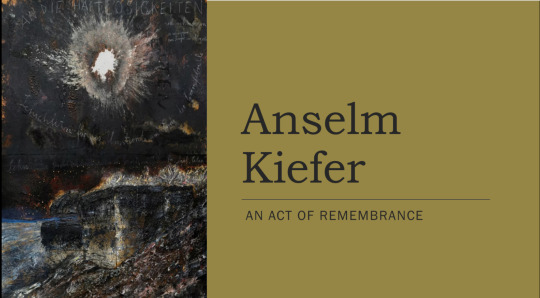
Anselm Kiefer is a German painter and sculptor, best known for his works depicting the horrors of the Holocaust. His works often incorporate unconventional materials such as straw, clay, ash lead, and shellac.

Kiefer was born to a Jewish family amongst ruins on 8 March 1945 in the German town of Donaueschingen. As the town came under intense bombing, Kiefer was born in the cellar of the family home that served as their improvised bomb shelter. In the first few weeks of his life his mother would take him during the day into the surrounding forest to shelter from the bombing. The house next door was blown to pieces.
The ruin next door became Kiefer’s playground. Before the age of six, when his family moved, he would spend his days playing in the rubble, prising loose bricks to build ambitious structures. Hitler’s ruins have haunted his work. Rubble piles up relentlessly in Kiefer’s work, and he deliberately portrays such imagery in his sculptures and paintings.

The past plays an important part in Kiefer’s work. His works are characterised by an unflinching willingness to confront his culture's dark past, and unrealised potential, in works that are often done on a large, confrontational scale well suited to the subjects.

This made him a very controversial artist when he first began his career as Germany and the German people were not ready to face and acknowledge the countries past.

Kiefer often credited the poetry of Paul Celan to have had a key role in developing his interest in Germanys past and the cruelty of the Holocaust, and frequently dedicated paintings to him.
Paul Celan was born in 1920 Romania to a German-speaking Jewish family. His surname was later spelled Ancel, and he eventually adopted the anagram Celan as his pen name.
In 1938 Celan went to Paris to study medicine, but returned to Romania before the outbreak of World War II.
During the war Celan was apprehended by Nazi soldiers and forced to work in labor camp for 18 months, while his parents were deported to a Nazi concentration camp where they were both killed.
After escaping the labor camp, Celan lived in Bucharest and Vienna before settling in Paris. Due to his radical poetic and linguistic innovations, Celan is regarded as one of the most important figures in German language literature the post World War 2 era. His poetry is characterised by a complicated and cryptic style that deviates from typical poetic conventions.

Two of Kiefers his most renowned paintings, Your Golden Hair, Margarete and Sulamith, are drawn directly from Celans most famous poem, 'Death Fugue' or 'Todesfuge'.
Widely read in postwar Germany, the poem is set in a concentration camp and narrated by the Jewish inmates, who suffer under the camps blue eyed commandant. Singing "your golden hair, Margarete/ your ashen hair, Shulamith," they contrast German womanhood, personified by Margarete, and Jewish womanhood personified by Shulamithe.
In Kiefers paintings titled Mararethe and Sulamithe he depicts this contrast visually, depicting Margaret with strands of straw amidst light blue paint, and depicting Shulamithe using dark colours and harsh brush strokes. One artwork out of hundreds that Kiefer has been inspired to create because of Paul Celans poetry.
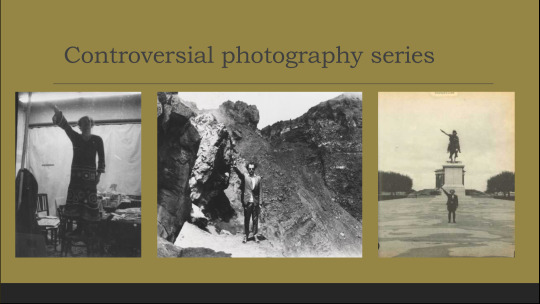
Aswell as painting and sculpting, Kiefer has also dabbled in the world of photography and performance art.
In fact, he was one of the first German artists to address the Nazi crimes in a series of photographs and performances called Occupations and Heroic Symbols. Dressed in his father's Wehrmacht uniform, Kiefer mimicked the Nazi salute in various locations in France, Switzerland and Italy. Naturally these pieces caused much controversy among critics and the general public. The meaning of this photography series was to remind Germans to remember and to acknowledge the loss to their culture from the xenophobia of the Nazi occupation.

At 79 years old Anselm Kiefer is still quite active in the art world and is still sought after by collectors and museums for his captivating artwork. These are some of his most recent works from the past 5 years.
2 notes
·
View notes
Text


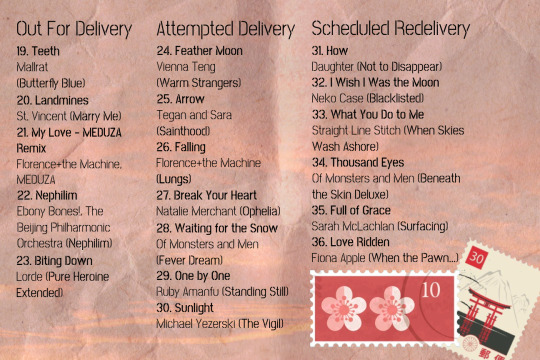


Return to Sender Original Soundtrack
Once a month, like clockwork, Rock Lee waited with baited breath for his mail to arrive.
-Return to Sender, Chapter One
Listen on Spotify
(Recommended listening: chronological order. Track list below the cut)
No Postage Necessary
1. The First of the Month
Running [Black Violin // Stereotypes]
2. Unwelcome Realization
Stray Italian Greyhound [Vienna Teng // Inland Territory]
3. Denial
So Afraid [Janelle Monáe // Dirty Computer]
4. Painful Truths
You Don't Know What Love Is [Chet Baker, Carson Smith, Bob Neel, Russ Freeman // Chet Baker Sings]
5. The Shinobi Way (Isn't to Love You)
I'm a Fool to Love You [Billie Holiday // Lady in Satin:
The Centennial Edition]
6. Small Comforts
Hope [Daughter // Music from Before the Storm]
7. The Love Letter
My Love - Acoustic [Florence+the Machine // Dance Fever (Deluxe)]
Shipping Label Created
8. Promotion
The Mission [Black Violin // Classically Trained]
9. Trying to be Helpful
Everybody Talks [Neon Trees // Picture Show]
10. Where Is It?
Overwhelmed [Chloe x Halle // Ungodly Hour]
11. Friendly Advice
Love Will Save the Day [Whitney Houston // Whitney]
Tracking Number
12. Delayed Departure
Under Pressure [Queen, David Bowie // Hot Space]
13. Forgive An Old Man's Mistakes
Youth [Daughter // If You Leave]
14. Parting
Due West [Kelsey Lu // Due West]
In Transit
15. The Journey to Suna
Running [No Doubt // Rock Steady (Expanded Edition)]
16. Arrival
Come on Home [Franz Ferdinand // Franz Ferdinand]
17. Pressed Against You in the Windowseat
Heavenly Day [Patty Griffin // Children Running Through]
18. Guilt Rising
Caught [Florence+the Machine // How Big, How Blue, How Beautiful (Deluxe)]
Out for Delivery
19. Consumed
Teeth [Mallrat // Butterfly Blue]
20. The Birthday Festival
Landmines [St. Vincent // Marry Me]
21. (Where is) The Love Letter
My Love - MEDUZA REMIX [Florence+the Machine, MEDUZA]
22. Red Handed, Empty Handed // Flee
Nephilim [Ebony Bones!, The Beijing Philharmonic Orchestra]
23. Open Wounds
Biting Down [Lorde // Pure Heroine (Extended)]
Attempted Delivery
24. Waiting
Feather Moon [Vienna Teng // Warm Strangers]
25. Try
Arrow [Tegan and Sara // Sainthood]
26. Falling
Falling [Florence+the Machine // Lungs]
27. Again, Try
Break Your Heart [Natalie Merchant // Ophelia]
28. Old Letters, Fresh Snow
Waiting for the Snow [Of Monsters and Men // Fever]
29. Apologies
One by One [Ruby Amanfu // Standing Still]
30. Secret Grief // A Sister's Meddling
Sunlight [Michael Yezerski // The Vigil (Original Motion Picture Soundtrack)]
Scheduled Redelivery
31. Waiting, Again
How [Daughter // Not to Disappear]
32. Engagement
I Wish I Was the Moon [Neko Case // Blacklisted]
33. The Package
What You Do to Me [Straight Line Stitch // When Skies Wash Ashore]
34. Nightmares // Fugue State
Thousand Eyes [Of Monsters and Men // Beneath the Skin (Deluxe)]
35. Junjō
Full of Grace [Sarah McLachlan // Surfacing]
36. Acceptance, Not Forgiveness
Love Ridden [Fiona Apple // When the Pawn...]
Signature Required
37. Self-Abasement
SUN GOES DOWN [Lil Nas X]
38. The Party
Golden Age [Ethel Cain // Golden Age]
39. Oversleeping
Watching You Without Me [Kate Bush // Hounds of Love]
40. Your Scars, My Hands
Between [Vienna Teng // Waking Hour]
41. Conversations in the Sky
Hard Feelings/Loveless [Lorde // Melodrama]
42. Sunsets From A Different (Love) Letter
My Love - Dave Glass Animals Remix [Florence+the Machine, Glass Animals]
Wrong Address
43. One Step Forward, Two Steps Back
Splintered [Aisha Badru // Pendulum]
44. Don't Forget: Try
Sand in My Shoes [Dido // Life for Rent]
45. A New Desk, Another Letter
Circles [Of Monsters and Men]
46. How Long Will You Make Me Wait?
Wait Another Day [Uh Huh Her // Common Reaction]
47. My Scars, Your Hands
Bridges [Aisha Badru // Pendulum]
48. Ambush
Kill of the Night [Gin Winmore // Gravel & Wine]
49. Captivity
Destroyer [Of Monsters and Men}
50. Dreadful Feelings, Dreadful News
Flaws [Daughter // Music From Before the Storm]
Your Package Has Arrived!
51. The Love Letter
My Love [Florence+the Machine, Dance Fever]
52. Unconscious But Alive
Colorblind [Counting Crows // Cruel Intentions]
53. A Father's Gratitude
Undeniable You [Jukebox the Ghost // Jukebox the Ghost]
54. Trauma
Honestly Ok [Dido // No Angel]
55. Heart Eater
Gentle Beast - Interlude [Utada Hikaru // Heart Station]
56. Confessions
Drop in the Ocean [Michelle Branch // The Spirit Room]
Special Delivery!
57. 54 Days
Sundown [Nightwish // Imaginaerum (The Score)]
58. Whatever it Takes
Our Love Will Survive [Wild Belle // Dreamland]
59. Through the Bad Days, Through the Good
Harbor [Vienna Teng // Warm Strangers]
60. Framed Letters
Bigger Than Love [Oh Wonder // Ultralife]
61. Sunset
XO [Beyoncé // Beyoncé (Platinum Edition)]
62. Tender Kisses Touch My Scars
This Love [Craig Armstrong, Elizabeth Fraser // Cruel Intentions]
63. Marry Me
Put Your Arms Around Me [Texas // White on Blonde]
36 notes
·
View notes